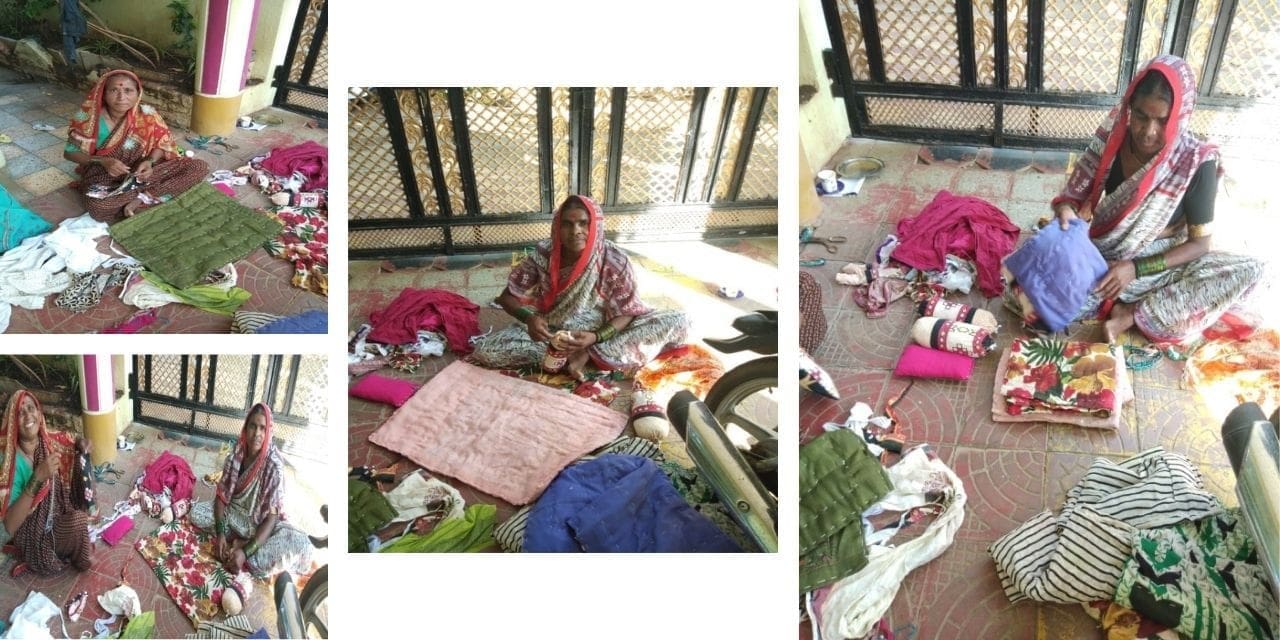RECYCLING OF OLD CLOTHES FOR GODHADI MAKING
Abstract
Clothing and Textiles are 100% recyclable. Recycling is the process of recovering fiber, yarn or fabric as well as garment and reprocessing the textile material into useful products. The average lifetime of a garment is estimated to be for a period of three years. All clothing has a useful second life. Within this period in previous days these were transferred to younger siblings. Now days this is not practiced much as the no. of children is one or two. Hence after the life time period, they are thrown away as old clothes. Even useful garments are discarded as they are no longer fashionable, or desirable. Clothes and textiles that are in good condition can be donated and sold for re-use. Items that aren’t suitable to be passed onto someone else can be recycled and made into new items such as padding of chairs, car seats, pillow making etc.cotton scrapes are mostly used in house hold work-for cleaning-mopping cloth, door mats ,zula (cradle) making, spreads for drying of grains, kitchen napkins and so on. Discarded clothes which are less faded can be utilized for patchwork and appliqué work.. A patchwork quilt is a quilt in which the top layer may consist of pieces of fabric sewn together to form a design. Originally this was to make full use of left over scrapes of fabric but now fabric is often bought specially for specific design. Very eye catching designs can be created through patch work.
In Maharashtra godhadi making is famous traditional art. It is a famous hand-stitched blanket..Godhadi is essentially the art of discarded textile material. It has always been a domestic craft where women at home, mostly in the afternoon come together and sew quilt out of waste fabric. They make patches from cloth and these are quilted together first as a single layer and later the layers get added. Generally the women from rural part come to town; they go to colonial areas to get the work of godhadi making.
This article will focus on history, places where this work is going on, method of approaching customers, back ground of families, construction method of godhadi, material used and today’s status of this work. Various organizations involved in this work will be discussed. Similarly newly developed patchwork designs will be presented.
INTRODUCTION
Clothing recycling is part of textile recycling. It involves recovering old clothing for sorting and processing. End products include clothing suitable for reuse, cloth scraps or rags as well as fibrous material. Clothing and Textiles are 100% recyclable. Recycling is the process of recovering fiber, yarn or fabric as well as garment and reprocessing the textile material into useful products. The average lifetime of a garment is estimated to be for a period of three years. All clothing has a useful second life. Within this period in previous days these were transferred to younger siblings. Now a days this is not practiced much as the no. of children is one or two. Hence after the life time period, they are thrown away as old clothes. Even useful garments are discarded as they are no longer fashionable, or desirable. Clothes and textiles that are in good condition can be donated and sold for re-use. India is a country with people of different cultural back ground and community. Recycling of textiles was a domestic craft in India. But currently there are textile clusters and small scale industries to work on second hand clothing. Items that aren’t suitable to be passed onto someone else can be recycled and made into new items such as padding of chairs, car seats, pillow making etc.cotton scrapes are mostly used in house hold work-for cleaning-mopping cloth, door mats ,zula (cradle) making, spreads for drying of grains, kitchen napkins and so on. Patches can be both functional and stylish. Use your old clothes to create patches for patchwork, quilting. You can use colorful differently shaped patches in a complementary pattern. If you have many smaller pieces, you can try making a full patchwork garment. In Maharashtra godhadi making is famous traditional art. It is a famous hand-stitched blanket..Godhadi is essentially the art of discarded textile material. It has always been a domestic craft where women at home, mostly in the afternoon come together and sew quilt out of waste fabric. They make patches from cloth and these are quilted together first as a single layer and later the layers get added. Generally the women from rural part come to town, they go to colonial areas to get the work of godhadi making.
Back Ground
One Sunday around at 12.00 noon, I heard a sound ‘Godhadi Ghyaychi ka shivun?’ meaning ‘ do you want to get godhadi stitched ?. I called them they were two ladies. I just enquired about them. Both came from nearby place 20 k.m. from my place.They came by auto.I asked what clothes or garment they will need for making a godhadi. They both just came inside of my main gate and told me to show old clothes stock. I brought two bundles wrapped in two saris, there were duputtas, salwar, ‘t’ shirts, pillow covers, towels, napkins etc. I asked them to make small godhadies for infant. The ladies were happy.The size ,rate was decided-Rs.80/piece for small size and Rs. 100/- for biger size They took out small tool kit from their bag. There was a big size(6 no.) stitching needle, thick thread, and razor. Firstly they asked me the size of small godhadi and selected sari, cut it in to two pieces. Then selected clothes for layering. They were taking due care to avoid any sequin, Zari, work or rough surface as the godhadi was being stitched for infant. The cut scrapes were kept aside.
Method
Steps in godhadi making for infants.
- Planning: Firstly the total stock of old garments or clothing was examined for different types of clothes such as saries, bed sheets, salwar, kurties, ‘t’ shirts, towels, pillow covers, sari petticoats, sari blouses etc. long clothes such as saries, dupattas .The size of the godhadi and number of godhadies to make was decideded.
- Sorting: soft cotton dupattas, smooth bed sheet, cotton sari,long towels were selected for outer cover making and, printed or plain soft hosiery ‘t’ shirts, napkins,pillow covers,salwar,kurties were used for inner layers.
- Cutting: For spreading of layers square pieces were found more Soft ‘t’ shirts, salwar, kurties, shirts were better used by separating or cutting necklines, sleeves, lower hem line and back and front parts were separated. Due care was taken by avoiding rough surfaces,laces,sequins etc.as it was for infant.This was kept aside for using as stuff in small pillows and cushions.
Preparation
- ‘T’ shirt- firstly neckline was cut ,sleeves were cut and separated shoulder seam thicker edge was cut, side seam was cut, lower hem line was cut two square or rectangle plain pieces were available. Cut scrapes were collected & kept aside to use as stuff in pillows and cushions.
- Salwar –Firstly upper belt hemline was cut, lower 7-9 inches strip was cut, inner seam of salwar was cut, lower stiff buckram strip was cut to get two long rectangular pieces.These were wider at the top and tapering at lower part from Total 4 pieces of 2 different sizes can be obtained or two pieces wider at lot and narrow at bottom can also be used in layering of pieces.
- Sari petticoats –In sari petticoat 4-6 panels are stitched upper belt them line is cut. Belt is kept a side lower frill or strip is cut and separated. Panels are separated. Seams are cut properly to avoid any thicker edge. Long panels are taken out. These are wider at one end and tapering at another end. Same sized squares can be cut or wide and narrow panels as it is can be used for layering. These panels can also be used for outer covering of baby pillows or round cushions (baby supporters)
- Kurties Short or long kurties are best for obtaining continues long or square layers. Sorting is necessary. Now days fancy kurties a with lot of embellishment is a fashion trend. However these all need to be avoided. e.g. sequins, zari work, embroidery work, pin tucks, corded tucks, cross tucks etc These parts are separated only plain part is selected. Neckline, sleeves ,lower hemline scrapes are kept aside for using as stuff.
- Stitching – Very soft and big size layer is selected for outer cover. This is spreaded, small pieces squares, rectangles, tapering squares are spreaded on base layer. These are joined with running stitch or basting stitch in vertical and horizontal direction. Then upper layer is spreaded and again bonded with long straight basting stitches using big needle and thicker thread. Edges are folded and stitched with fine hemming or blanket stitch. Row of the stitches depends on the size of the godhadi.If the size of the godhadi is bigger, then stitches are taken at a distance of 2”-2.5”.For small size,these are taken at 1” distance. Needles size should be suitable for thread thickness so that threading of needle and stitching through three layers of the fabric becomes easy.
- Designing – floral printed, bright colored checks designed, geometric designed cloths or sari cloth, and bed sheets were used for outer covering. Generally white thread is used for all stitching. On colorful background this white thread stitches look attractive. The patches were placed on back ground surface,stiching was continued with very even medium length stitches.
Organizations involved in recycling of textiles- Kishco Group, Mumbai, India deals with import and export business related to recycled clothing. Mothers quilt one of the NGOs in Pune. One such trained quilt maker is Archana Jagtap, who runs ‘Quilt Culture’ where she customizes quilts according to the demands of the buyer. “New design, colour, size and fabric preferences are traditionally made and crafted using saris like Irkal, Jijamata and Narayanpethi to lay emphasis on Maharashtrian quilt aesthetics,” she said. The fillers that she uses are made of Nagpur cotton and only finishing touches are given using a sewing machine.
Conclusion- Textiles and clothes in India are recycled both for the domestic and the global market. Traditional method of making godhadies from discarded clothes is still exists even Though many organizations and companies have started large scale, export quality recycled articles. House hold level small work should be encouraged. Two women constructed 15 baby size godhadies in 4 hours. This was complete hand work. They earned Rs.1500/- In Maharashtra today there are so many NGOS working in this area. Their godhadies are exported to other countries. Machine stitched godhadies,quilts, patch work handicrafts are very popular .However hand stitched godhadies are more elegant, it has emotional bonding –called Ajji’s (grand ma’s) Godhadi .In rural area still today the women are making godhadies for house hold purpose as well as small scale entreprizes.Which inculcates our traditional culture and heritage .Hence such small scale ,household entrepreneurs should be strengthened to make our country “Atmnirbhar India”
References
- Bairagi N.(2014) “ Recycling of Textiles inIndia (2014) Journal of Textile Sci.Engpp.
- Textile Clothing and Life style Products pp 62 65
- hindustantimes.com
Small godhadies prepared by godhadi makers:
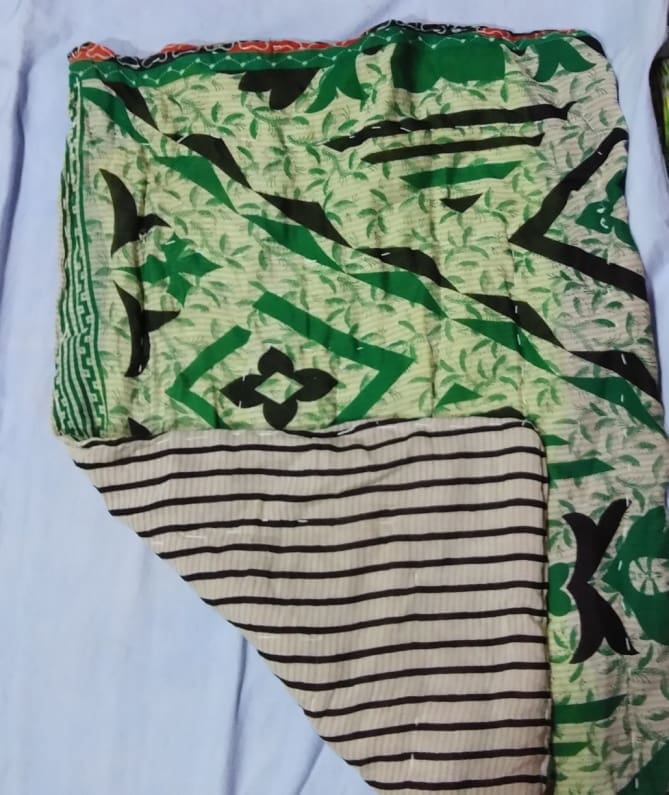
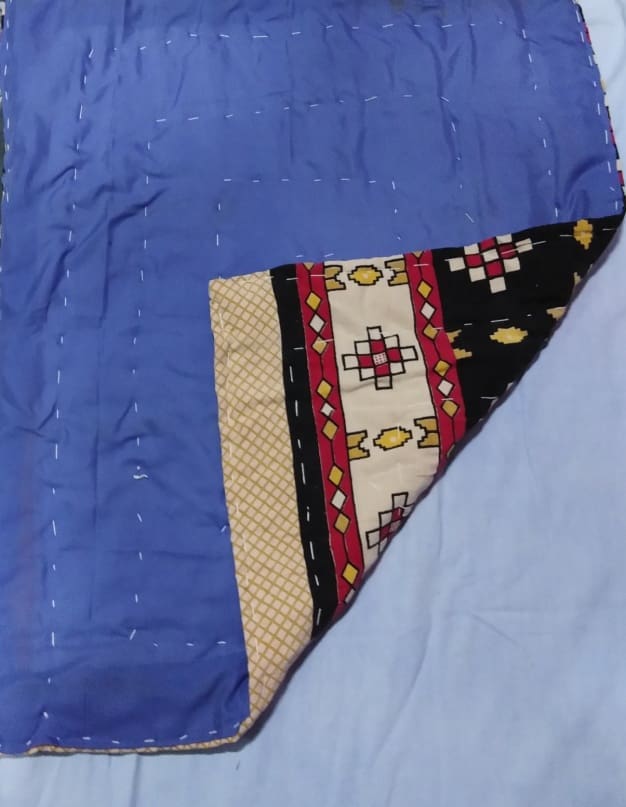
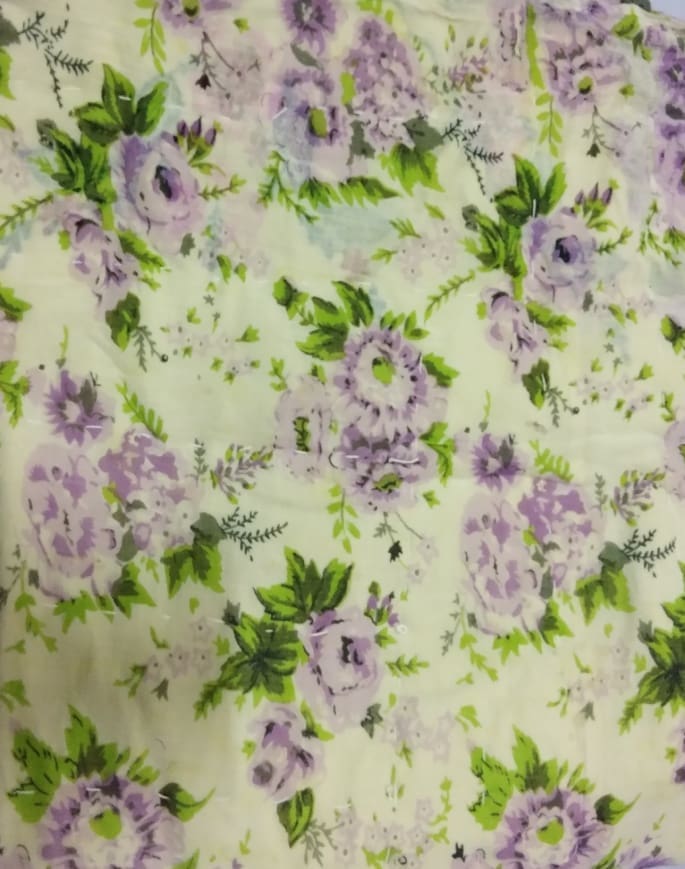
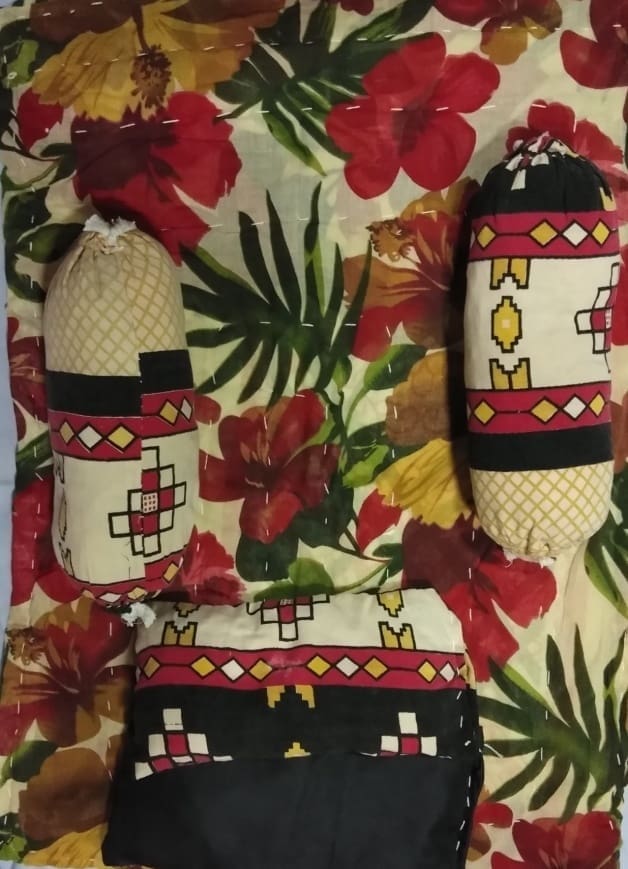
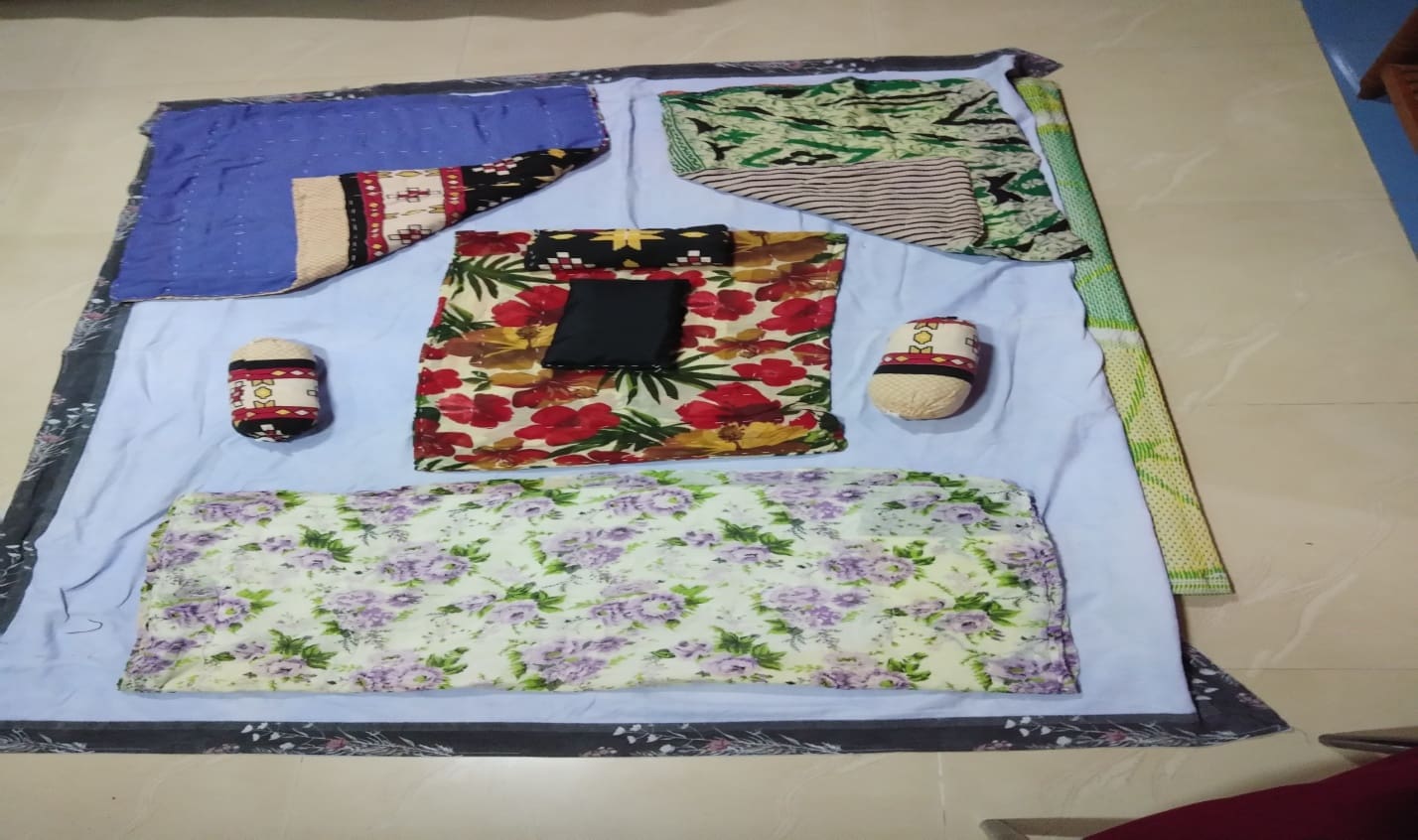
Article By:
Prof. Medha Umrikar & Dr. Irfana Siddiqui
Department of Textiles and Apparel Designing
College of Community Science
Vasantrao Marathwada Krishi Vidyapeeth,
Parbhani (Maharashtra, India)

